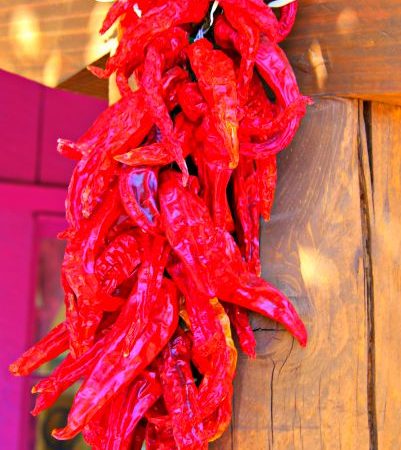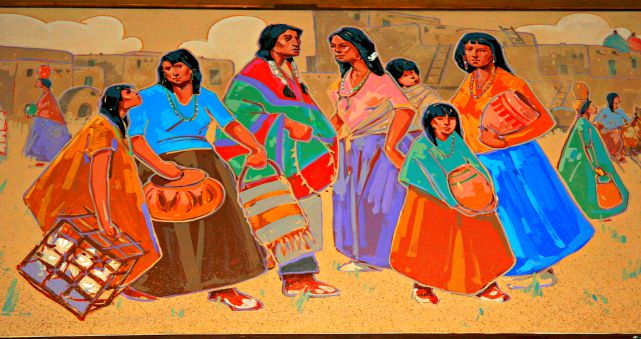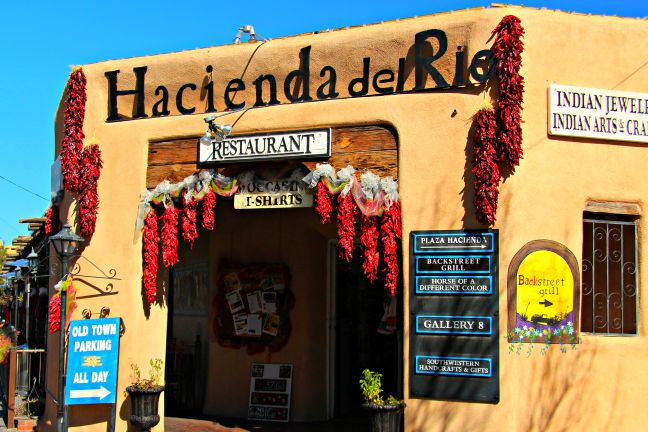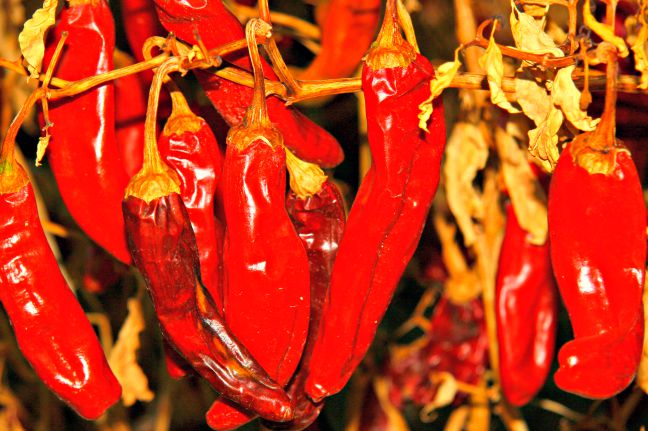If you’re like us, you love exploring America’s vast and varied culinary landscape during your travels. And I’m not talking fast food. From the Deep South to New England and Louisiana to the Southwest, each region has its own distinctive cuisine.

Red chiles are usually strung up to dry in the beautiful chile ristras typical to the state, then ground as needed before being cooked into sauces. © Rex Vogel, all rights reserved
One of our favorites is New Mexican, a blend of Spanish, Mexican and Pueblo Native influences. If you’ve never had New Mexican food, then prep your taste buds now.
Its key ingredient? Chile. Chile comes in two varieties: red and green. Which one you will prefer is up to your palate. (Note that New Mexicans use the spelling chile, not chili, to mean the plant and the green or red sauce they make from it.)
Across the state, chile is served at every meal, is celebrated at festivals, and is the subject of the Official New Mexico State Question, Red or Green?, estimated to be asked over 200,000 times a day in the state.
The foundation of New Mexican cooking, long-pungent chili pods can be picked in their green or red form. In either color, chiles become the key ingredient in cooked sauces served as an integral part of traditional dishes, rather than separately.
Both chile sauces are made from the same chile, but the red chile has been allowed to hang on the plant longer and become fully ripened. Green chiles are typically roasted, and then chopped, to make a sauce flavored with stock, garlic and onion. Red chiles are usually strung up to dry in the beautiful chile ristras typical to the state, then ground as needed before being cooked into sauces.

A mural in Santa Fe’s historic La Fonda on the Plaza depicting Pueblo life. © Rex Vogel, all rights reserved
The textures and flavors of the sauces are quite different. Green chile sauce has a sharper, “greener” flavor and the red tastes deeper, rounder, sweeter and earthier. Neither is definitively hotter than the other. That depends on the growing conditions and the particular variety of chile. If you can’t decide between green or red chile, ask for it “Christmas,” which will give you some of each.
Most restaurants do not offer you a choice of having hot or mild, but they do offer to put the red or green chile accompanying your meal on the side. You can also ask which is hotter, because it can vary from season to season. Green is not always the hottest.

he beautiful chile ristras strung up for sale in historic Old Town Albuquerque. © Rex Vogel, all rights reserved
No adventure in New Mexico is complete until you have experienced the cuisine. At the center of it all is the chile, in both red and green varieties, which is used in everything from enchiladas to wine and ice cream.

